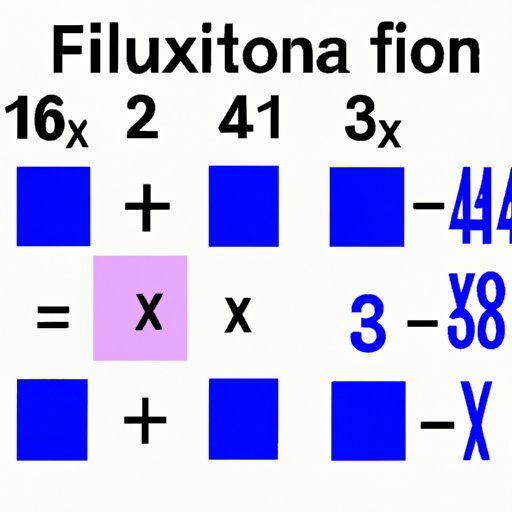
Introduction
Multiplying a fraction by a whole number is an essential skill in elementary mathematics that affects more advanced math topics and everyday situations. This comprehensive guide aims to provide a step-by-step guide for multiplying fractions by whole numbers, tips and tricks to simplify the process, and how to teach it to kids.
The Basics of Multiplying Fractions by Whole Numbers
Multiplication is the process of finding the product of two numbers. A fraction is a part of a whole, while a whole number is a number without fractions or decimals. To multiply a fraction and a whole number, you must understand each fraction’s various parts, including the numerator and denominator, and how to convert a whole number into a fraction. By multiplying the fraction’s numerator by the whole number and leaving the denominator unchanged, you get the result.
Step-by-Step Guide to Multiply Fractions by Whole Numbers
Follow these steps to multiply fractions by whole numbers:
- Convert the whole number to a fraction by placing it over one.
- Cancel any common factors between the fraction’s numerator and the whole number’s denominator.
- Multiply the remaining parts of the fraction.
- Simplify the answer, if possible.
- Write the final product as a mixed number, if required.
Tips and Tricks for multiplying Fractions and Whole Numbers
Some tips and tricks include: understanding common denominators, reducing the fraction before multiplication, using visual aids, memorizing the multiplication table of small whole numbers to simplify calculations.
Mastering Elementary Maths: Multiplying Fractions and Whole Numbers
Multiplying whole numbers with fractions is extensively used in everyday life, from calculating cooking ingredients, currency exchange rates, and measurements. It’s vital to master these fundamentals to build a strong foundation for advanced mathematics.
Simplifying the Process
It’s common for students to forget the steps involved in multiplying fractions and whole numbers or get confused during the process. Common mistakes you can avoid include not simplifying the fraction before multiplying, forgetting to cancel common factors, or incorrectly writing the final answer as an improper fraction. Practicing with sample questions, memorizing the steps, and following best practices can help simplify the process.
Breaking Down the Basics: How to Teach Multiplying Fractions to Kids
Teaching multiplication of fractions to children requires understanding their learning patterns, simple methods, and teaching aids. Fun tips to help children include using visual aids such as play-doh, fraction manipulatives and creating real-life scenarios.
Conclusion
Mastering the art of multiplying fractions and whole numbers is essential to fundamental mathematics and real-world situations. By following the steps, tips, and tricks outlined in this comprehensive guide, you can simplify the process and teach your children or students the correct way to approach and solve these problems.





